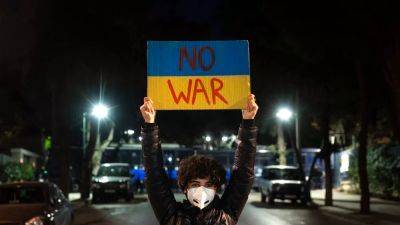Rats the size of AK-47s and grimy mud: Winter comes to Ukraine war
Winter has only just arrived, but it has already brought an array of difficulties to the Ukraine war. Armies on both sides are being affected and Ukrainian civilians too.
“Spare a thought for the Ukrainian defenders in the trenches,” Tyler Kustra, assistant professor of politics and international relations at the University of Nottingham, told Euronews.
More than a million Ukrainian and Russian soldiers are currently fighting in eastern Ukraine, as temperatures plummet and winter weather begins to bite.
But that is the start of their worries.
Citing images of rats "the size of a Kalashnikov assault rifle" shared on social media by troops, Kustra said Russia's forces "are dealing with a severe rodent infestation as mice and rats seek warmth and food by going into their trenches.
"Given that the Ukrainians are just on the other side of the front line, I worry that Putin isn't the only vermin that they will have to deal with," he added.
Various social media posts and reports have emerged in recent weeks purporting to show plagues of rodents inside Russian frontlines, a sign of increasingly unsanitary and degrading wartime conditions for troops on the battlefield.
AFP recently reported that mice were chewing cables of important pieces of equipment in Ukraine's trenches, like heaters and internet devices, adding yet another problem.
Fighting in winter, meanwhile, is challenging.
“Lying in trenches when it is minus 10 or 20 can give soldiers hypothermia,” Dr Marina Miron, a post-doctoral researcher at the King’s College War Studies Department told Euronews, adding that a lack of foliage means they cannot hide out in the open.
Extra fuel and proper clothing are needed “just to survive the winter battlefield,” she continued, placing








